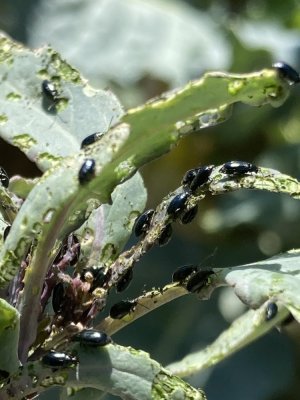Jane23
Garden Ornament
- Joined
- Sep 28, 2022
- Messages
- 238
- Reaction score
- 474
- Points
- 95
- Location
- South Eastern Montana, Zone 3b
These guys moved in last spring. It appears my kale site is contaminated. Anything I should do to destroy them?
I removed the top layer of soil in July, but it seems some of them survived and my kale seeded itself.

